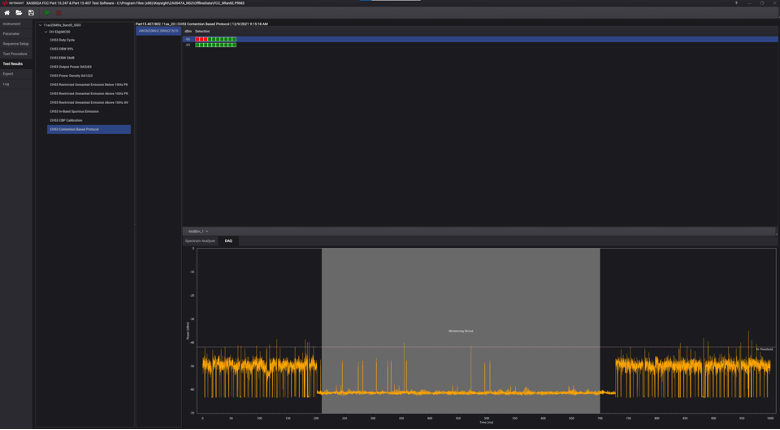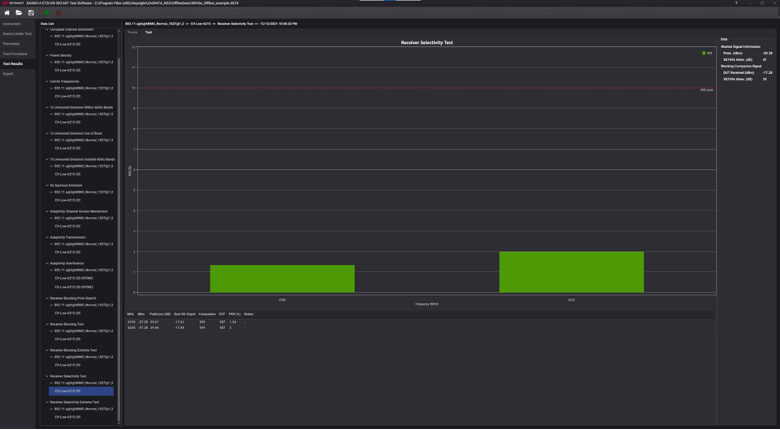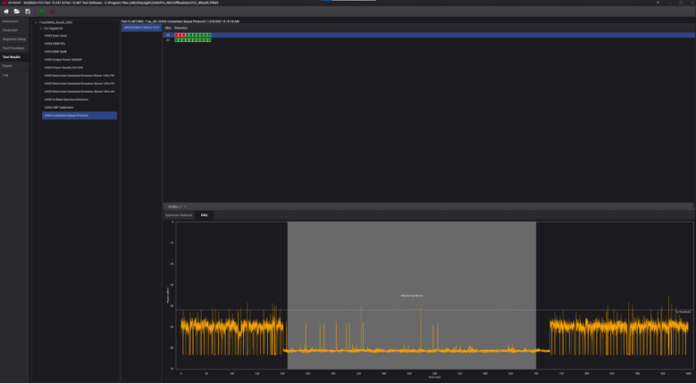Wi-Fi 7 has been designed from the ground up for operation in the 6 GHz band
Wi-Fi 7, which is designed from the ground up for operation in the 6 GHz band, is also known as Extremely High Throughput, thanks to its support of up to 30 Gbps throughput. The next generation of Wi-Fi also promises higher spectrum and power efficiency, better interference mitigation, higher-capacity density and better cost efficiency.
In the below conversation, which has been edited for length and clarity, Keysight Technologies’ Senior Application Engineer Bill Koerner discusses the state of 6 GHz Wi-Fi and how many of Wi-Fi 7’s exciting features like — Multi-Link Operation and Automatic Frequency Coordination — are impacting the test and measurement industry.
As Wi-Fi 7 is starting to emerge as the primary Wi-Fi conversation, what are your thoughts on the state of 6 GHz adoption?
Koerner: Over the last year, the number of countries adopting part, or all the 6 GHz band has increased. A portion have adopted different frequency ranges. For example, some countries in the EU have adopted 5945-6425 MHz, while the rest have adopted 5925-6425 MHz. This will place more design constraints to device manufacturers. Some countries have adopted 5925-6425 MHz but are considering the range of 6425-7125 MHz. This could create interesting market deployments for device manufacturers, as they may need to have their original products reassessed in the future should those countries adopt the higher frequencies. They may also decide to leave their existing products with the original frequency range.
In the U.S., the FCC has seen certifications for 6E products increase substantially, from an estimated 89 products in 2020 to over 285 as of November 2022. Most of these devices have been station, or client devices (such as smart TVs, Wi-Fi cards for computers, etc.).
Reporting data for the EU is harder to come by, as manufacturers are not required to get their products certified before use (as in the case of the United States). Therefore, it is difficult to predict the growth of 6E products available for use in the EU. Given the EU adopted their portion of the 6 GHz spectrum in late 2021, it is reasonable to expect the number of 6E products is lower than the U.S.
Has 6 GHz operation made testing more complex? How so?
Koerner: Most test equipment solutions were designed to cover up to 6 GHz. With the 6E requirements, this will require upgrades to cover up to at least 7.125 GHz.
The FCC has added a Contention Based Protocol (CBP) test for the 6 GHz band. This is a relatively new approach for the FCC to focus on the receiver functionality and employ a Listen Before Talk (LBT) capability. This will require a slightly different test set-up, and potentially new equipment. The figure below shows an example measurement result using the Keysight XA5002A FCC Test Software. The graphic gives an example of a power level where the device failed to detect the incumbent signal and stop transmitting.

This type of testing (LBT) has been required for the EU for all frequency bands and is not new for the 6 GHz band. However, some of the other receiver tests are more complex than the lower frequency bands; notably the Receiver Selectivity tests will require testing at more frequencies. The figure below shows an example measurement result of receiver selectivity; the measured Packet Error Rate (PER) on the operating channel was less than 10% for interference signals 20 MHz below and above the operating channel using the Keysight XA5001A ETSI Test Software.

The move to Wi-Fi 6 (802.11ax) to use OFDMA within the 5 and 6 GHz region has brought additional challenges. One new capability, preamble or channel puncturing will allow a Station device to ‘puncture’ an existing channel used by another Station device to transmit its data. This represents some unusual changes to existing tests, specifically the interference-type tests.
While the 6 GHz band has been available for over two years in the U.S., there are still additional changes to come, when the FCC announces rules for what are considered Phase 2 devices. These will be focused on outdoor devices and will require Automatic Frequency Coordination (AFC) to operate. That introduces another regulatory test, but what and how is currently unknown.
What other challenges might Wi-Fi 7 bring to the table? Will these challenges target certain sectors over others? The RF guys, for instance?
Koerner: Besides the 6GHz previously discussed, Wi-Fi 6 (802.11ax) and Wi-Fi 7 (802.11be) introduced OFDMA, MRU (Multiple Resource Unit) and MLO (Multi-Link Operation). We see these features as a three-legged stool. Each requires the other to work well — but come up short on any and the stool will fall.
To that end, exhaustive and predictive testing must be made available to cover the many test cases these three features introduce. From an RF perspective, there will be little change from Wi-Fi 6E, it will still use the 6 GHz band, but with wider channel bandwidths available. Some of the tests required for Wi-Fi 7 are already being designed into the regulatory test standards.
How is Keysight addressing this increased complexity?
Koerner: Keysight enables solutions (IOT0047A Regulatory Test Solution) to allow not only Layer 1 testing of these features, but also the complex interactions that happen at Layer 3 and above (IxVeriwave). Selection of PHY rates, choice of bandwidth utilization (OFDMA/MRU), and choice of link (MLO) all are tied to decisions created well above Layer 1.
Keysight also … participate[s] in several industry association groups developing standards, including the FCC’s Technical Advisory Council (TAC), Telecommunication Certification Bodies (TCB), the European Telecommunication Standards Institute (ETSI), and the IEEE 802.11 working groups.
What are some of the Wi-Fi 7 features that you’re most excited about? And what advanced applications might they help enable?
Koerner: The combination of MRU and MLO that come from Wi-Fi 7 provide several Wi-Fi enhancements. MRU will allow band management and MLO will allow for throughput management as well as latency selectivity. Add to that the 320 MHz channel bandwidths that will potentially allow amazing high-speed data rates.
Wi-Fi 7 enables a host of advanced cases. Many people see Wi-Fi 7 as the entry to the VR/AR world as it allows for significant latency reduction, groomed throughput and dedicated links — if needed.

